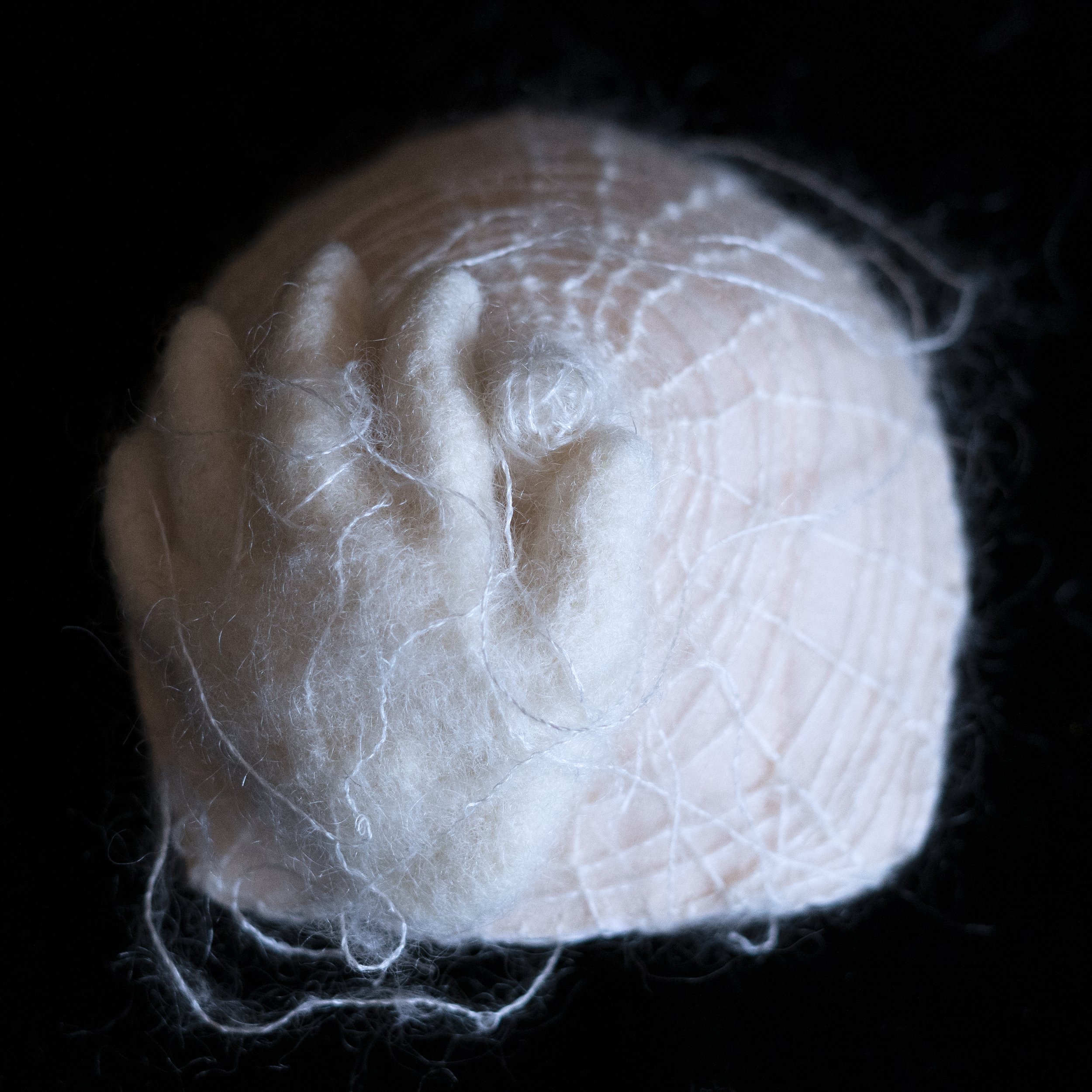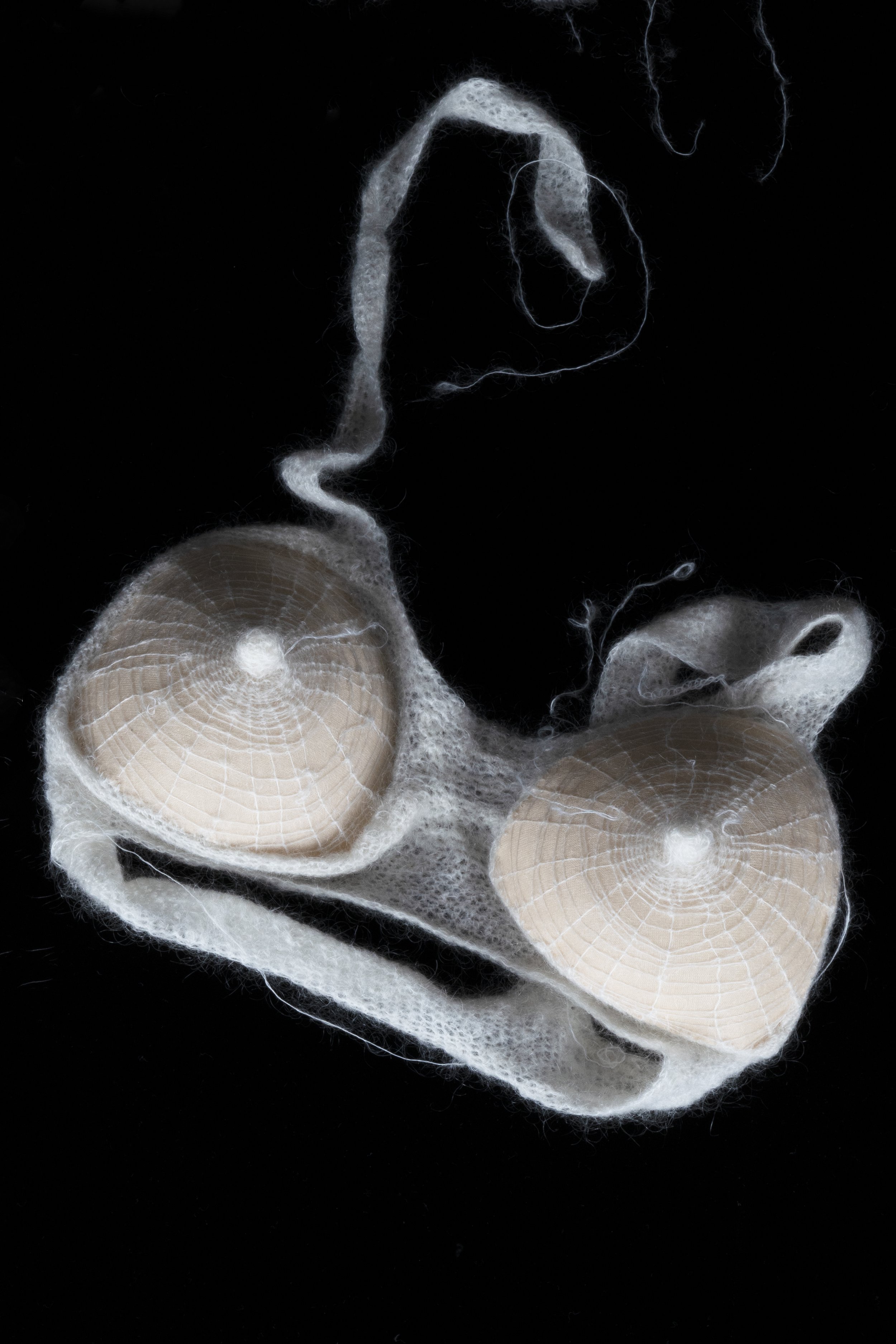Interview with Aomi Kikuchi
Aomi Kikuchi is a textile artist based in Kyoto, Japan. She holds a BFA from Kyoto University of Art & Design (Japan) and an MFA from Pratt Institute (USA). Aomi has exhibited her work throughout the world including at Woman’s Essence Show 2022 (Paris),The First Suzhou Craft Biennale 2021(China), Art Laguna 2021(Italy) and Art Laguna at Villa dei Cedri 2022. Her work is based on Japanese aesthetic principles and the teachings of the Buddha. “Wabi-sabi”, a well known philosophy that beauty is found in imperfections and “Mono-no-aware”, the feeling of sympathy for that which changes or perishes such as the seasons and all living things. The Buddha states that life is impermanent, insubstantial and suffering. People feel suffering when they seek something everlasting yet while existence is not eternal, the activities of matter and life are conceptually infinite. Over 30 years, Aomi has dedicated extensive and immersive practice to various textile materials and techniques including Traditional Yuzen Kimono Dyeing, Japanese Embroidery, and Weaving. Aomi takes inspiration from the fragility and fleetingness found in natural cycles and in textiles such as extremely thin fibers, goose down, and wool fiber. She explores impermanence and infinity through the use of biology and nature with textiles and waste.
We'd like to express our gratitude for speaking with us about your work. What are the following projects or exhibitions you're working on?
I started a new project. I named it "Pixel Weaving". If you zoom into the details of the fabric, you can see the surface is like a grid of intersecting warp and weft threads. Digital photographs are also made up of squares called pixels. Inspired by this structure, I transformed each color of the pixels in the photo into 3cm square handwoven fabrics. I then connect them together in the same composition as developing photos to create my work. My intention is to develop photographs using weaving instead of printing. For the first work, I chose a monochrome image of Marilyn Monroe's face as a motif. She was active in the world of brilliant movies, but passed away at 36. For me, she is one of the icons of my artist's statement: the impermanence of our lives.
Could you talk about your background, particularly how you got started in the art world?
In Japan, art is written in Chinese characters as bi-jyutu (beauty and technique) or gei-jyutsu (accomplishment and technique). As it is prominent, the distinction between art and craft is ambiguous in Japan. Japanese people tend to appreciate beautiful and perfect things.
I was fascinated by Yuzen dyeing, which is a dyeing technique for Japanese kimonos, and started making works. I was interested and learned various craft techniques such as pottery, porcelain painting, and Japanese embroidery, as well as all dyeing practice. While creating works in search of beauty and perfection, I challenged new techniques and methods of expression. Besides learning craft skills, I also studied art at an art university and graduate school.I was always trying new things, and was able to put myself in a place where I could think and learn what beauty and art is. These endeavors have led to my current activity as an artist.
What does your studio and a day at your studio look like? Are there any rules you follow when in the studio?
I live a production-centered life in my house studio. I like to stay productive, so I'm always working on multiple projects at the same time. As a piece is completed, I start a new piece while many others are work-in-progress.
Where does the inspiration for your distinctive aesthetic come from? What motivates you to create?
My work is inspired by the keywords of Buddha's teachings: transience, flimsiness, desire, suffering, and mercy. I treat the concept of Infinity as a succession of fleeting and brittle activities. The material often stimulates my creativity.
Since childhood, we are encouraged to dream, have fun, and strive to be happy. But when we want something and it doesn't come true, we suffer. What we call reality is only sensations experienced through taste, smell, touch, hearing, and sight, and not certainty. This idea can ease our obsession. I create works based on the Buddha's teachings with the hope that we can live with love and compassion.
Which of your strengths do you believe contributes most to the success of your work?
When I started creating my works, I focused on dyeing silk fabric. As I gradually started creating installations and sculptures, my choice of materials became more free. Recently, I am actively using leftovers and waste. Changing our perspective opens up new possibilities. I think my strength is that I am making an effort to be able to think flexibly.
As an artist, what are your goals? What kind of acknowledgement is most important to you?
My goal is to contribute to making the world a better place through my artistic activities. I would like to participate in a project that raises awareness of the environmental problems, discrimination, and mental health problems in modern society. I think it's important to explore ideas for solutions in unconventional ways .
What role, in your opinion, does the artist have in society?
Artists can play an important role in society. The power of art is “problem-raising, imagination, realization, co-creating, and its effects are innovation, organizational revitalization, vision building, and branding”. This is quoted from the book titled Art in Business co-written by a creative director, Hiroyasu Wakabayashi working at Dentsu: a Japanese international advertising and public relations joint stock company. As he says, artists can create new values and perspectives with deep insights. They are also good at imagining and embodying things that do not exist in this world. And the audience can also be stimulated by the artist and create something.
As for my work, it is about mindful life, so I hope my viewers have the opportunity to think through my work about ephemerality of this world and suffering created by egoism and desire and all can live no conflict with compassion.
What are your ultimate career goals?
When Hokusai reached the end of his life at the age of 90, he said, "I wish God could extend my life for another ten years." After a while to say more, “If God could keep my life for five more years, I can become a real painter. Even Hokusai, who left more than 30,000 works, kept pushing his goal forward. I don't have a concrete ultimate goal at the moment, but I believe that cherishing this moment every day and accomplishing small goals one by one will lead me to my final goal.
If you could choose any venue, space, or location, where would you love to show your works, and which ones?
Exhibitions have generally been held for limited periods at limited locations in developed countries. Online exhibitions,on the other hand, allow artists to participate from anywhere in the world and allow viewers to see their work from anywhere in the world at any time. It can be seen by people who are sick and unable to move, or people who live in isolated areas. As the Metaverse technology develops, it will become possible to enjoy a more realistic experience. It is idealistic to see the real thing, but in reality that is only limited to a number of people . I think that online exhibitions can be enjoyed by more people and it will play a major role in making art more accessible. I think this is an excellent way of showing my work and would like to actively participate in online exhibitions.














